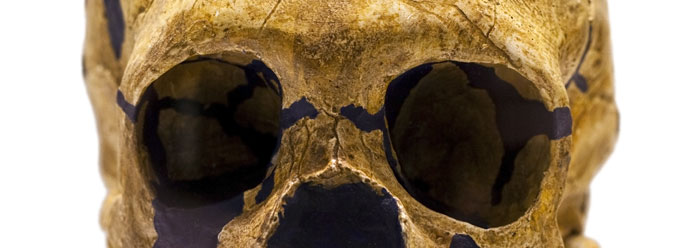
Neandertal: The Answer is Epigenetics Not Evolution
by Jeffrey Tomkins, Ph.D. *
Recent genome reports show that the Neandertals are essentially fully human, causing scientists to reclassify them as "archaic humans."1,2 But what about the apparent subtle differences in anatomy that first caused scientists to claim that Neandertals were a completely different species? It turns out that the answer can be found in epigenetics, according to newly published research.3Epigenetics, in the more modern sense, refers to the heritable chemical changes performed by cellular machines to DNA that alter gene function without actually changing the DNA nucleotide code. In the field of genomics, it is more accurately referred to as chromatin modification. Chromatin is the stuff chromosomes are made of which consists of the DNA molecule packaged around proteins called histones. Both the DNA and the histone proteins can be chemically modified to control how genes function and are regulated along the chromosome.
Specifically, the DNA molecule is modified by adding methyl groups to the cytosine nucleotides called DNA methylation. In general, the more methylated the DNA is at the start of a gene region, the less active the gene is. The patterns of DNA methylation across the genome are collectively called the methylome and can be compared between similar genomes and correlated with specific types of gene activity.
In a recent report in the journal Science, researchers studied the methylomes of two different Neandertals using a new indirect method of analysis for archaic DNA.3 They corroborated their DNA methylation profiles with modern humans and reported that "over 99% of both archaic genomes show no significant methylation differences compared to the present-day human." Another verification of their technique is that they also analyzed the patterns of Neandertal methylation compared to modern humans in housekeeping genes—those that are required for the maintenance of basic cellular function. The methylation patterns were the same compared to modern humans, indicating that the study's methodology was fairly accurate.
The most interesting aspect of the study came... CONTINUE READING AT ICR.ORG



